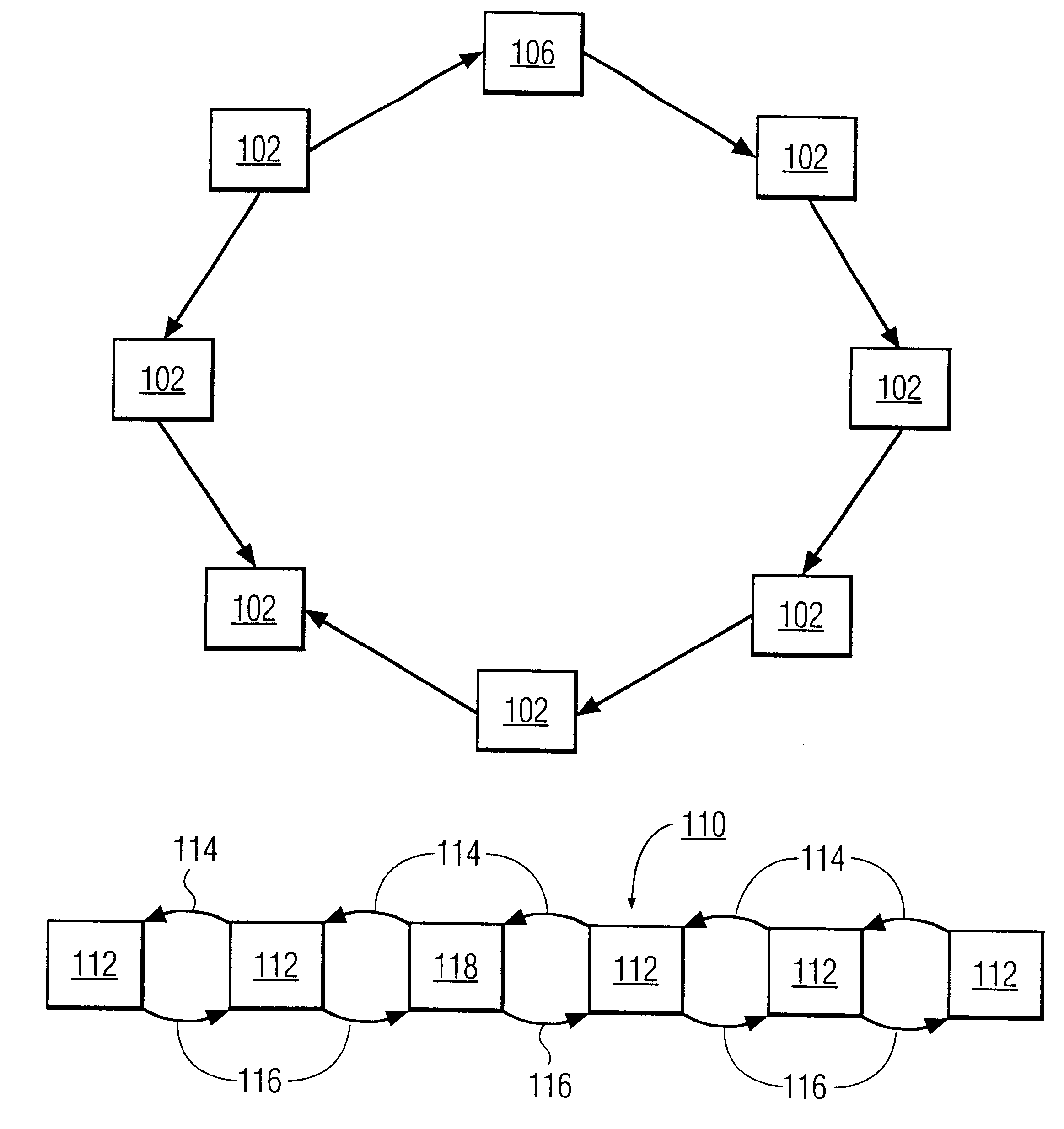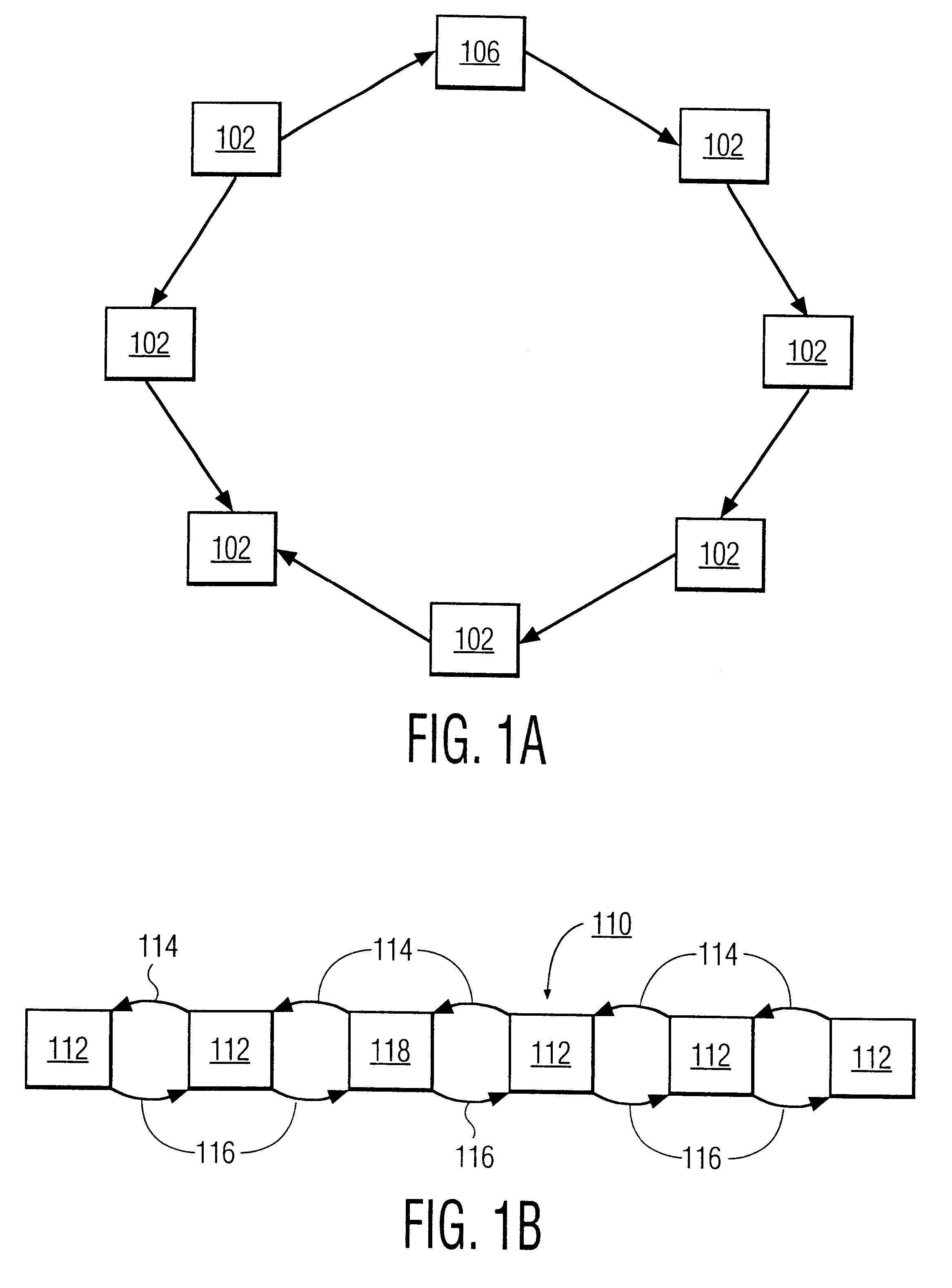Verification of active nodes in an open network
a technology of active nodes and open networks, applied in data switching networks, frequency-division multiplexes, instruments, etc., can solve problems such as avalanche-type failure, no guarantee that all relevant nodes have received the message, and inability to verify broadcast protocols
- Summary
- Abstract
- Description
- Claims
- Application Information
AI Technical Summary
Benefits of technology
Problems solved by technology
Method used
Image
Examples
first embodiment
FIG. 1A is a block diagram of this invention with a network 100 having a plurality of nodes 102 and a node 106. The network 100 is designed in this example as a logical ring. The ring does not have to be an actual physical layout of nodes. The diagram illustrates an abstract or logical node layout. Thus, it should be recognized that the nodes can be in different locations e.g., in different offices, buildings, cities, states or even in different countries. Moreover, the communication pathways connecting the nodes do not have to be in any particular arrangement provided that each node can communicate with its successor, and with all other active-nodes on the network in a broadcast fashion.
Each node 102, 106 has a copy of a polling protocol for propagating a polling token along communication pathways 104. The communication pathways 104 can be of any type of wired connections such as twisted pairs, coaxial cable, fiber optics, phone lines, DSN, T1, T2, T3 or the like, or any type of wi...
second embodiment
FIG. 1B is a block diagram of a network of this invention including a network 110 having a plurality of nodes 112. The network 110 is designed as a logical chain. Each node 112, 118 has a copy of a polling protocol for propagating a polling token along forward pathways 114 and backward pathways 116. If all of the nodes 112, 118 are active the polling message will propagate along the chain until a break occurs. The chain configuration requires the protocol to have a forward successor address used with the forward pathways 114 and a backwards successor address used with the backwards pathways 116. Stated differently, each node 112, 118 has the address of its successor for use in forward propagation and the address of its predecessor for use in backward propagation. At the chain ends, the successor address and predecessor address is the same.
FIG. 1C is a block diagram of a super network 150 with a plurality of linked-node networks 152a-d. Each network 152a-d includes a plurality of nod...
PUM
 Login to View More
Login to View More Abstract
Description
Claims
Application Information
 Login to View More
Login to View More - R&D
- Intellectual Property
- Life Sciences
- Materials
- Tech Scout
- Unparalleled Data Quality
- Higher Quality Content
- 60% Fewer Hallucinations
Browse by: Latest US Patents, China's latest patents, Technical Efficacy Thesaurus, Application Domain, Technology Topic, Popular Technical Reports.
© 2025 PatSnap. All rights reserved.Legal|Privacy policy|Modern Slavery Act Transparency Statement|Sitemap|About US| Contact US: help@patsnap.com



